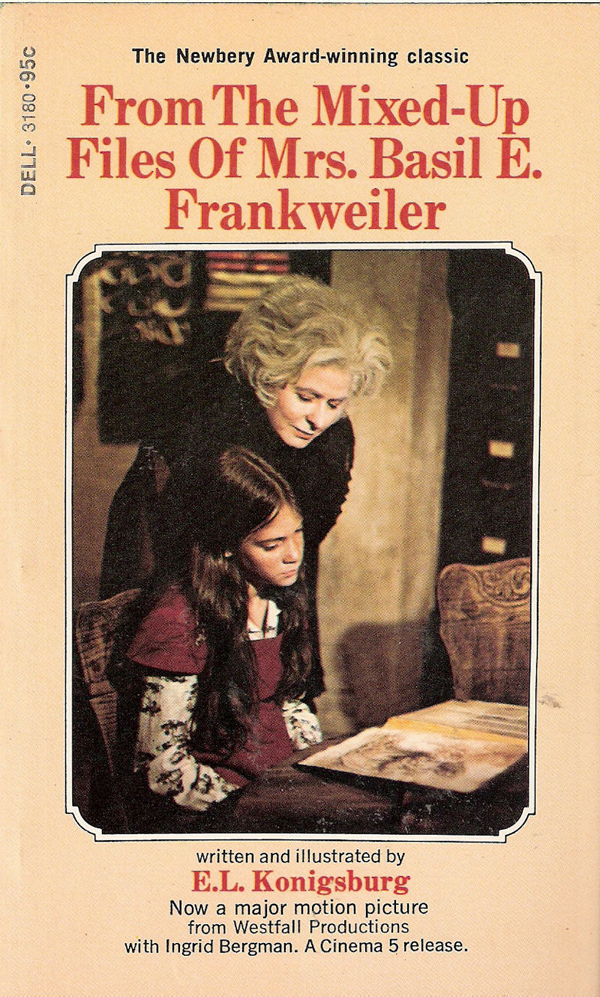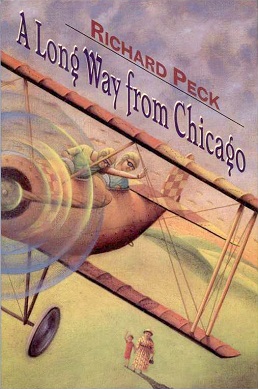I was able to read through all of this year's books in two days. Then I just let it sit and sit... and
sit. I had other things to do, but I didn't want too much time to slip by so, without further ado, my thoughts on the Newbery honorees and winner for 2015.
El Deafo by Cece Bell

This fun and engaging book is the first graphic novel to be honored by the American Library Association with a Newbery! Let me go ahead and climb on a soapbox and say that I completely approve of the growing acceptance of graphic novels as being real literature. I think that if students are learning with them, and inclined to pick them (which many students are) then let's write more stories about a wide variety of topics. I'm an artsy-fartsy person, I love me some long books with pictures - most of the time the easiest way to get this is through a graphic novel, and there are just as many wonderful art styles to be found on this shelf as the picture books shelf. In NO way though, should this be considered a 'stepping stone' to 'real books'. *shudder* They ARE REAL BOOKS!!! I can find plenty of graphic novels with a higher word count and higher reading level then say.... The Old Man and the Sea, but one certainly can't hold one against the other and say, "ah, this tome here has been bestowed with all the qualities of bookitude, but, alas, it's brethren dost lack necessary qualities because of its frivolities."

Actually I don't use bar soap... I had to use a soupbox instead.
Although calling it a graphic novel might be misleading because it isn't a novel at all, rather it is a memoir focused on the author's struggle to find friends and navigate through her school years in the 1970s. The catch? She is deaf; she uses hearing aids both at home and at school. Her school aid is particularly cumbersome, being a large box that must be worn like a backpack (except frontwards). She makes some friends, but they either aren't great people or don't understand how to act around her. Not that she was particularly forthcoming with information. When she finally finds a great friend it all seems perfect - until an accident threatens everything.
There are a couple of inappropriate moments, but normal pre-pubescent inappropriateness. Overall the book is the right mixture of serious and humorous to keep a person from feeling down, but to convey the loneliness the author felt at times. As with any graphic novel memoir whatever the illustrations are an important consideration, that may be where this book falls shortest. I like the idea of rabbits for characters in a book focused so much on ears, but often-times the pictures simply remind me of Arthur. I think that some readers best suited for the story might be turned off by the 'cute' pictures.
Overall a great book to choose for many reasons:
1. Long may the graphic novel reign!
2. Bring on the adolescent memoirs.
3. The addition of some ability diversity into the line-up. (I've not read many of the Honor books, but between them and the winners only a handful of primary characters with physical disabilities come to mind and none that I recall being deaf.
Brown Girl Dreaming by Jacqueline Woodson
Look at all those stickers. It can't win too many more or they'll have to put some on back.
Another memoir! This is the book that I was certain would win based on all my very complex calculations. This is a book written in verse, so it's length is semi-deceptive. There are some long poems and some short ones, but it is pretty much all in blank verse. I'm not usually a big fan of memoirs, but this book was beautiful, I can see why it was a frontrunner pretty much since publication. Jacqueline talks about never quite fitting in with other kids, and always wondering where home really was.
The descriptions in this book are quite vivid without being drawn out or over-rendered. I've never spent much time in the South - nor do I ever, ever, ever, ever, ever want to. One week every decade or so has serviced me pretty well up to now. But the descriptions in the poems are full and palpable. I could almost feel the humidity hanging in the air, smell the warm sticky night air, and hear the crazy chorus of crickets sounding for miles around.
Meanwhile in my neck of the woods... I'm lucky winter is my favorite.
I love that our protagonist finally discovers that she can take control through words. That too was my feeling, I loved the escape of reading - but adored the command of writing.
Totally deserved the award for a couple reasons:
1. Diversity, the author herself notes that, growing up, she was very excited to find a book with people that reminded her of herself. We just need to add fuel to the fire until is no longer something to search for, but rather something that just sort of happens.
2. Memoir? Poetry? Both great additions to the normal fictional prose format of the Newbery.
Which brings us to....
THE WINNER OF THE 2015 NEWBERY AWARD
This book has it all! A young male protagonist. Sibling Rivalry. Young Love. Parental Struggles. Basketball. Poetry... Excuse me. BASKETBALL AND POETRY?!?!
I heard about this book winning and I questioned the sanity of the award committee. I shook my head and thought, "oh no, looks like they're trying to be cool."
I read the description and didn't feel any better. Surely this was some sort of stunt to bring in those 'reluctant' readers.
Then I started the book. And finished the book. And immediately started looking for the book's next reader. I've never been so compelled to push a book into someone's had and say, make sure people know. Know that they should read this book and find other people to read it.
The last book I read about sports was... spvcsfateeetgbsdfb, yeah - nothing comes to mind (unless we are counting bullfighting) - but basketball? I like basketball, I really do, as a very casual watcher. But I know almost nothing about it other than it is a billion times more interesting than football. Also I can make the occasional basket. Well then. I can see basketball pulling the kids in, but poetry? That can be a tough initial sell for the kind of people I've known who play b-ball (do we still abbreviate it that way?), many of whom don't actually read an abundance of books. But the poems in this book are short, catchy, and come in a variety of styles.
GAH!!! I want to say more, but feel that I'd give too much away. Just trust me when I say that this book is totally worth it, go buy it, borrow it, or beg it off a friend, but please, please, please just give it a chance.
Why this book totally earned its award:
1. High-interest topic - Basketball is a very popular sport in most of the country, this book has a boy holding a basketball on the cover and is named for a common maneuver.
2. Diversity - We need brown boys just as badly as brown girls.
3. Boys - Boys are notoriously harder to sell on the idea of reading a novel. But I think a great many would bite on this book. It has officially unseated Holes as the 'boy-appeal' winner.
4. Subject - The subjects covered in this book are heavy and handled in a wonderful manner. They all come together in a beautiful, believable way.
5. Poetry - The poetry is tough and different, there are several varieties throughout the book, but they all play their part correctly. And since poetry is actually quite a handy tool for reading development this tag-teams with reason #1 to do double duty for struggling readers.
Overall, I'd say that I was wrong. Utterly and completely. The award committee was well within their right minds to choose this book as the award winner.






















